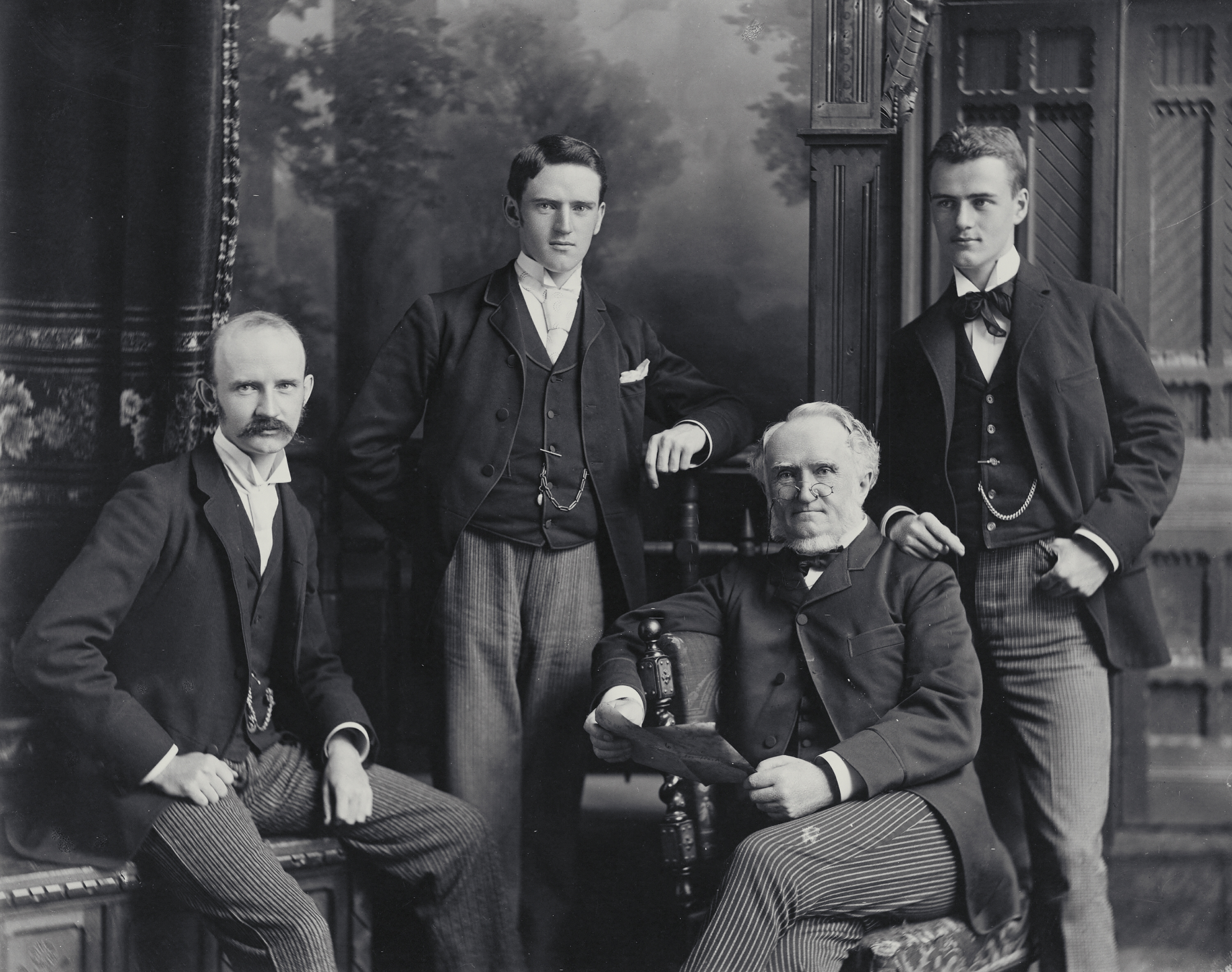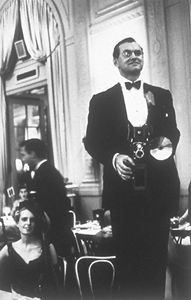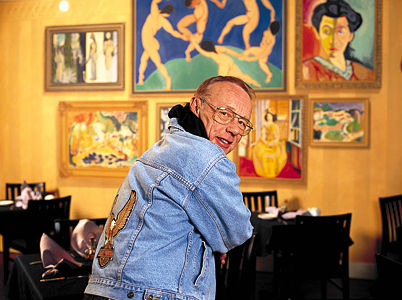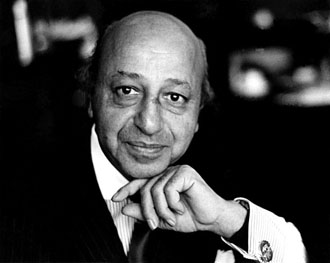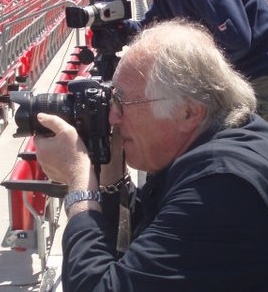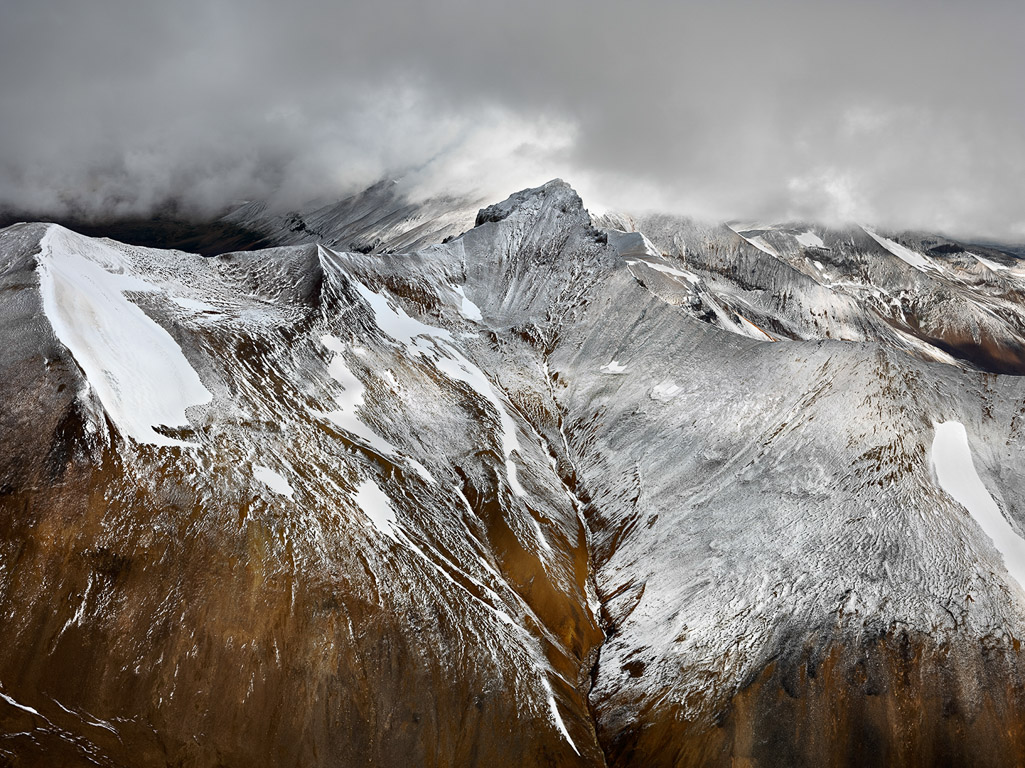Ulrich “Fred” Herzog, photographer, teacher (born 21 September 1930 in Bad Friedrichshall, Germany; died 9 September 2019 in Vancouver, BC). Fred Herzog was a professional medical photographer and a photography instructor at the University of British Columbia and Simon Fraser University. He is best known for his colour photographs of Vancouver street scenes, which documented working-class neighbourhoods and the downtown before they were transformed. His use of colour film was unusual for a fine arts photographer, and his work was largely overlooked for years. His first solo show — at the Vancouver Art Gallery in 2007, when he was 76 — received widespread acclaim.
War-Torn Childhood
Born Ulrich Herzog in the German town of Bad Friedrichshall in 1930, Herzog grew up in a middle-class household in nearby Stuttgart, as Germany descended into Nazism. His father, also named Ulrich, was an engineer who was suspicious of Hitler and the Nazi movement. Herzog’s mother, Erna, was a homemaker and an arts afficionado who initially supported the Nazis; she even took young Ulrich to a Hitler rally in 1938.
Herzog’s mother died of paratyphoid fever in 1941. During the Second World War, his father’s factory was bombed, and so was the family home, though Ulrich and his family managed to escape harm. Herzog recalled losing everything he owned and valued in the war. His sister lost her boyfriend, who was conscripted into the army and died not long after reaching the Eastern Front.
Like many German children who survived the war, Herzog was back in school just six months after the war ended. He recalled that none of the students spoke of their wartime experiences, and the subject was generally avoided by adults as well. After Herzog’s father died in 1946, he was left in the care of a stepmother he described as unloving, and who kept heavily rationed food from him and his siblings. Herzog was eventually taken in by relatives and worked for a short period in his grandparents’ hardware store.
When his uncle died, Herzog inherited a folding plate camera, which he traded in for a more reliable and manageable Kodak Retina, with which he taught himself photography.
Early Life in Canada
Herzog immigrated to Canada in 1952, initially settling in Toronto. He ran out of money before the end of his first day in the city, and was forced to pawn a coin collection and a photo enlarger. Later that night, as he was sitting on his porch, he met a South African medical photographer named Ferro Shelley Marincowitz. The two men decided to get their own apartment and build a darkroom they could share. Marincowitz quickly became Herzog’s close friend and mentor, introducing him to medical photography, which Herzog later made his full-time profession.
In 1953, Herzog moved to Vancouver, where he found work with Union Steamships. His colleagues gave him the nickname Fritz, which in turn became Fred. In 1957, he landed a job at St. Paul’s Hospital as a medical photographer, documenting surgeries and skin diseases. This led to a managerial post at the University of British Columbia (UBC) in 1961. By the end of the decade, Herzog had a full-time job teaching photography at UBC. He also taught at Simon Fraser University. During this time, Herzog spent much of his spare time walking around Vancouver, taking thousands of photographs of everyday people going about their business in the busy port city.
Photography
Fred Herzog estimated that he took more than 100,000 colour photos and over 30,000 black-and-white photos over the course of his career. He frequently walked around Vancouver for prolonged periods, photographing what he saw. These photos primarily document street scenes and street life in the Downtown Eastside: they focus on ordinary people going about their lives, of spaces and places, and of the transformation of old Vancouver, a city of wooden houses and small brick buildings, into a new and modern metropolis of glass and concrete high-rises.
Though Herzog was unaware of it at the time, he was documenting old downtown Vancouver before it was thoroughly transformed. His subjects were often working class or poor. Ethnic, cultural and racial minorities also feature heavily in his work, as do the storefronts, neon signs and people of Vancouver’s working-class neighborhoods. Herzog’s work contrasts sharply with stereotypical photos of Vancouver, which often focus on major tourist attractions, mountains, the ocean and nature in general.
Herzog’s distinct style was not appreciated in much of the 20th century, when “serious” fine arts photography was, by convention, almost exclusively in black and white. At one point in the 1980s, Herzog tried to donate his photographic collection to the National Gallery in Ottawa; it turned him down, saying they were only interested in black and white photography. (The gallery later added 40 of Herzog’s photographs to its collection, all before his death.) Herzog used Kodachrome slide film, which produced vibrant, highly-saturated colour photographs. He also habitually shot from the hip to ensure people wouldn’t notice him taking the photograph, which he felt would ruin the shot and erase the reality of the moment he was trying to capture.
First Solo Show
For many years, Herzog was something of a mythic figure in the Vancouver arts scene; he was revered by a few but mostly unknown to the public at large. Much of his work sat in boxes in his basement, as he was unable to produce prints that satisfied his aesthetic standards. However, when he was in his seventies, printing technology became sufficiently advanced to allow faithful reproduction of the texture and depth of his vibrant colour photographs.
Herzog’s first solo exhibit at the Vancouver Art Gallery in 2007 made him an overnight sensation. It brought him widespread recognition and led to the publication of several collections of his photos. He subsequently had other exhibitions in Vancouver and one at the National Gallery in Ottawa, as well as in Berlin, New York, London and Hamburg. “I found photography and then perhaps photography found me,” Herzog said in a 2012 documentary about him. “But that came in the last 10 years you know. All the sudden my stuff is the right stuff.”
Honours and Awards
In 2010, Herzog received an honorary degree from Emily Carr University of Art and Design. In 2014, he won the Audain Prize for Lifetime Achievement in the Visual Arts, one of the most prestigious arts prizes in British Columbia. Also in 2014, Canada Post used his iconic 1960 photograph Bogner’s Grocery on a stamp.
Personal Life
Herzog married a fellow German immigrant, a flight attendant named Christel. Together they had two children and lived in a modest home in Vancouver. Christel died in 2013.
Controversial Holocaust Statements
In a 2012 interview with Marsha Lederman of the Globe and Mail, Herzog was asked whether he had experienced racism as a post-war German immigrant to Canada. He made several statements that indicated he doubted the historical veracity of the Holocaust, and specifically whether Jews had in fact been gassed as a form of execution in the death camps. During the interview, Herzog returned to the issue of the Holocaust several times, seemingly doubling down on his doubt, before changing course and agreeing that horrible and barbaric acts had indeed been committed. In subsequent interviews with Lederman, Herzog repeatedly apologized for his statements. He indicated that his conversation with the journalist had prompted him to reflect and reconsider his beliefs on the matter, which he said had changed entirely.
(See also Photography in Canada.)

 Share on Facebook
Share on Facebook Share on X
Share on X Share by Email
Share by Email Share on Google Classroom
Share on Google Classroom
